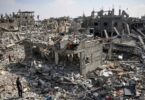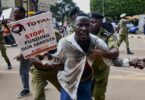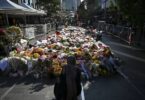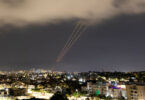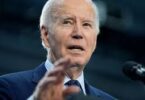Andrey Kots
Russia and Belarus will hold major joint maneuvers “Allied Resolve 2022” in February. The main goal is to work out the actions of troops in defense. Western countries expectedly accused Moscow and Minsk of aggression and escalation of international tension. At the same time, NATO is planning its own exercises, the largest since the Cold War.
Repel an attack
The maneuvers will take place at the Belarusian tra-ining grounds Domanov-sky, Gozhsky, Obuz-Lesn-ovsky, Brest and Osipovic-hsky from February 10 to 20. The infantry and tanks will be supported by aviation from the airfields of Baranovichi, Luninets, Lida and Machulishchi. 60-80 thousand military personnel from both sides will be involved in the exercises and, in fact, the entire infrastructure of the Belarusian army will be involved.
For the first time, not only soldiers and officers of the Western Military District (ZVO) will train with Belarusians, but also units from the Far East, which will be transferred across the country by rail. According to Russian Deputy Defense Minister Alexander Fomin, a situation may arise when the forces of the regional group are not enough to repel external aggression. “In this case, it will be necessary to involve the entire military potential of the two countries in defense,” he said.
The exercises were divi-ded into two stages. First, a joint grouping of troops will be formed in Belarus, they will organize the protection and defense of important state and military facilities, and they will ch-eck the readiness and ability of the air defense forces on duty. Then the allies will repel the “attack” from the outside and conduct several counter-terrorist operations. The range of tasks is wide: from combined arms combat to the neutralization of illegal armed formations and sabotage and reconnaissance groups.
For the first time, the Su-35S will also be used here – 12 fighters have already arrived at temporary airfields. The Ministry of Defense clarified that the pilots will work out flights to the maximum range. Two divisions of S-400 anti-aircraft missile systems and Pantsir-S anti-aircraft missile and gun systems will also make their debut in Belarus. In total, several hundred units of military equipment will take part in the “Union Resolve” – tanks, infantry fighting vehicles, artillery, drones, transport and attack helicopters.
New “forecasts”
Deputy Minister Fomin emphasized that “it is planned to prepare the troops and forces not only for actions within their boundaries of responsibility, but also for solving suddenly arising tasks of localizing crises in any threatened directions.”
Indeed, the recent riots in Kazakhstan were stopp-ed only thanks to the pro-mpt intervention of CSTO peacekeepers led by Ru-ssia. In addition, Afghani-stan remains a common pain point, where the Taliban have been in charge for more than six months.
However, in Kiev, Fomin’s words were considered a veiled threat: allegedly, the Russian-Belarusian exercises are preparations for an attack on Ukraine.
According to the commander of the Joint Forces Operation in Donbass, Lieutenant General Oleksandr Pavlyuk, the “invasion” could begin on February 20, after the completion of the maneuvers and the Olympic Games in Beijing. It must be said that in recent months this is already the fifth or sixth “forecast” of the Ukrainian authorities regarding the timing of the “Kremlin’s aggression.”
Kiev is echoed by Washington. “The movement of Russian troops into Belarus over the weekend is not an exercise or a routine redeployment,” the State Department said. “It’s a show of force. What we’re seeing clearly shows Russia’s possible intentions to move into Ukraine.”
The overseas patron was immediately supported in the Baltics. Lithuanian Defense Minister Arvydas Anusauskas considers the joint exercises of the Union State as a direct military threat to the country.
Moscow has to deny such accusations every time, but the West always uses them as a pretext for placing NATO military equipment near Russian borders.
Western answer
At the same time, the North Atlantic Alliance is preparing for the Arctic exercises Cold Response-2022, which will take place in March-April and will be the largest since the Cold War: 35,000 troops from 28 countries of the bloc, as well as Finland. The United States and Great Britain will allocate the most numerous contingents. London and Washington will also provide aircraft carriers USS Harry Truman, HMS Prince of Wales and escort ships.
The sea part will take place in the Norwegian Sea, the land part – in the central and northern regions of Norway, between the base in the village of Porsangermoen, the port of Narvik and the Royal Air Force base in Bodø. The Allies will work out the landing of amphibious assault and its cover both from ships and from the air. Thus, by building up its military presence in Eastern Europe, NATO is beginning to put pressure on Russia from the north.
“These exercises have both military and political significance,” says political scientist Vladimir Bogatyrev. “They are aimed at confronting Russia. And, paradoxically, with those countries of Southeast Asia that are interested in the development of northern territories. the further the West advances, the more difficult the situation in this region will be. Military activity has been growing here in recent decades, and now especially.”
At the end of December, Colonel-General Fomin pointed out that NATO was purposefully developing the Arctic and strengthening combat training activities in the region, using strategic bombers and anti-missile defense systems. And he stressed: in 2020, the alliance refused to support the Russian “Military Restraint Initiative” to reduce the intensity of the exercises.


